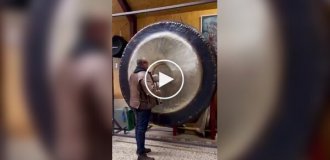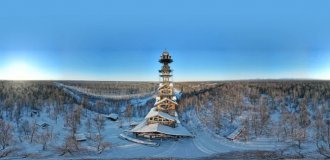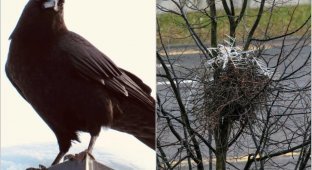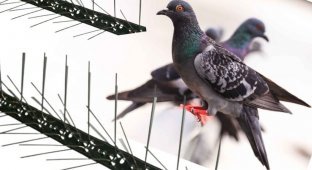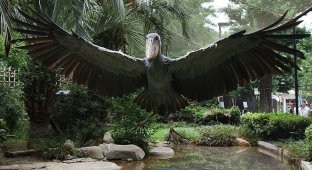Hammerhead: one of the best feathered builders in Africa (12 photos)
The hammerhead is widespread in Africa and often stays near human settlements. The nests of these birds are a very large and durable structure made of sticks and branches, reaching 1.5 m in diameter. Building such a nest is a real feat. 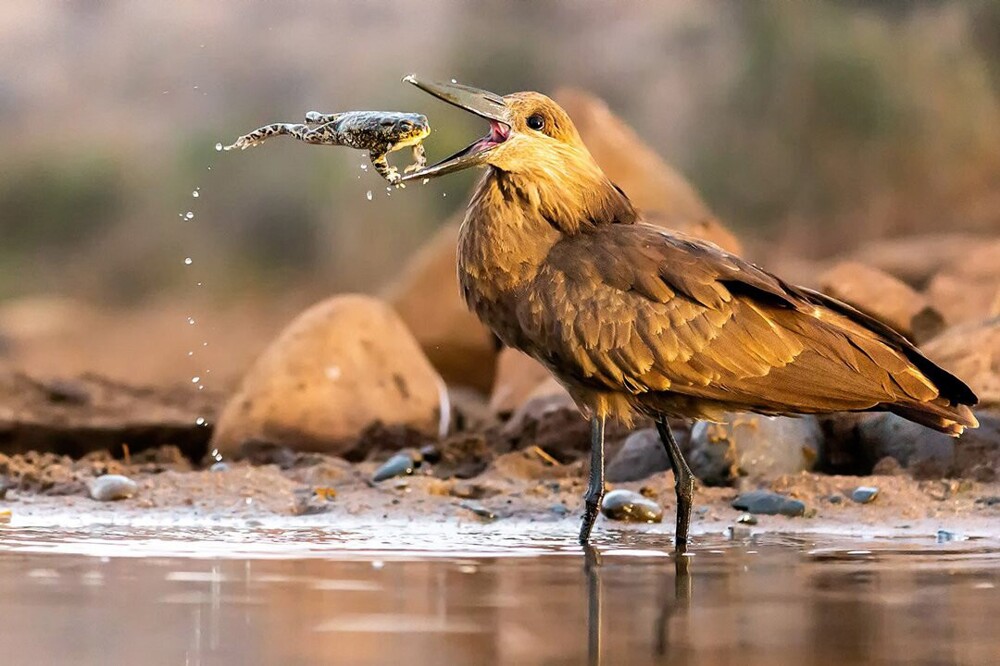
That's when the name speaks. The Hammerhead isn't just a bird with a tool-like head. This is one of the best feathered builders in Africa! Jokes aside: the nests of these birds are considered elite housing among the rest of the feathered and woolly contingent on the continent. Why, a nest of hammerheads can even support a person! 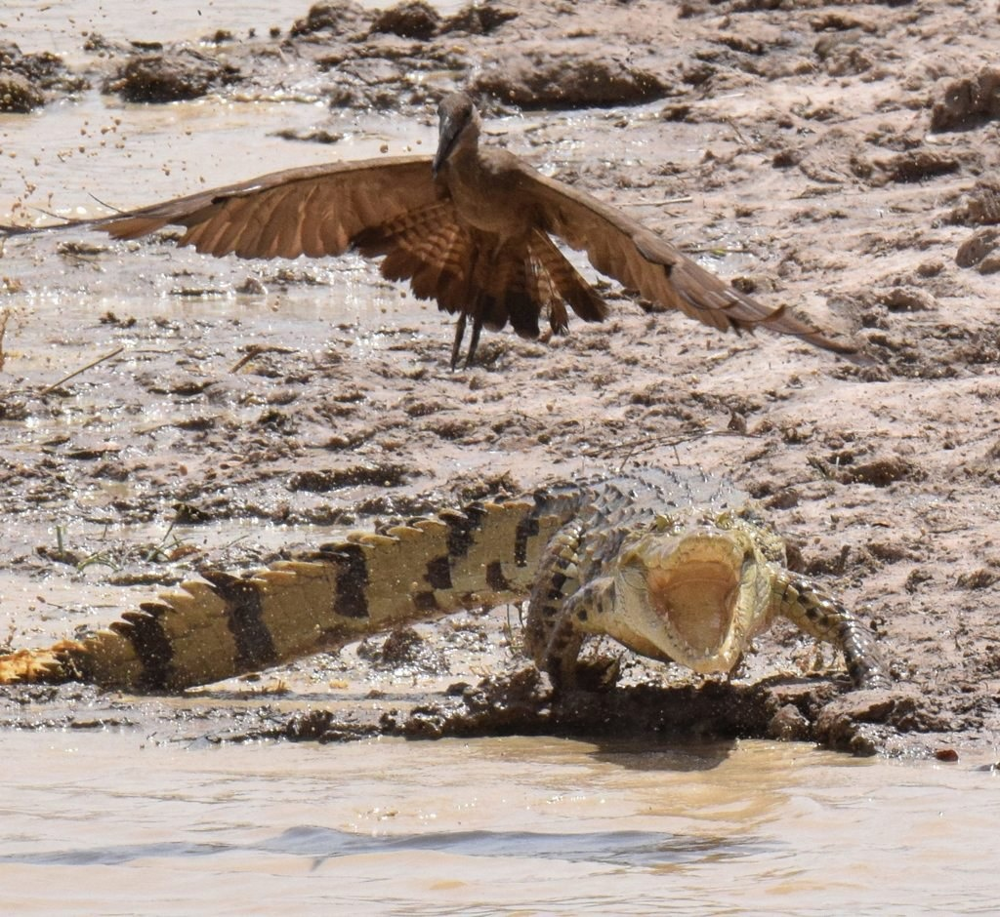
The hammerhead, hammerhead, shadow stork, or tufted umber is a small marsh bird from the pelican family. It is not difficult to distinguish it from the rest of the continent's biodiversity. On average, they grow up to half a meter and weigh about 500 grams. Regardless of gender, Umbers wear modest brown robes. And on the back of the head, as if in contrast to the long nose, the birds have a large crest of feathers. Because of this appearance, the birds are called hammerheads - their chirping sounds are very similar to that same construction tool. 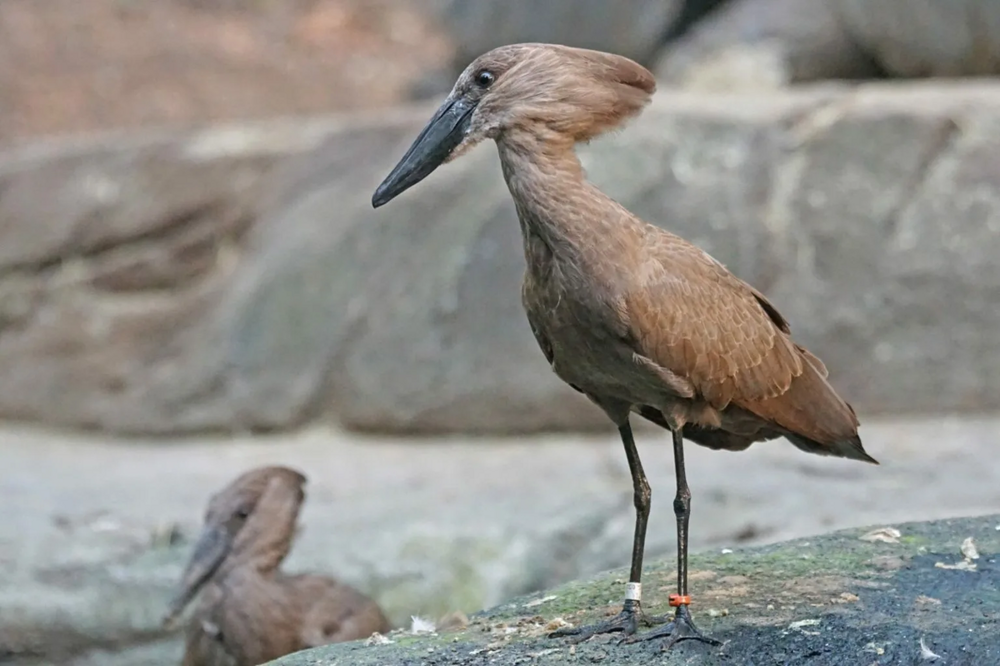
By the way, they use it exactly for its intended purpose! Hamerkop are very notable for their hard work and desire to have separate housing. Not just one, but several at once! So, one pair of birds can build up to 5 nests in a year! Not for chicks - most of them are created outside the breeding season. And just like that, for the soul!
Moreover, these nests are not just any kind, but capital and for centuries. First, the umber is selected from a suitable wood. It must be located near a reservoir, because this is where the birds get their food. The second requirement for the tree is sufficient thickness and height to support the bird's mansion. After finding the perfect construction site, the Hammerheads take out their tools and get to work. 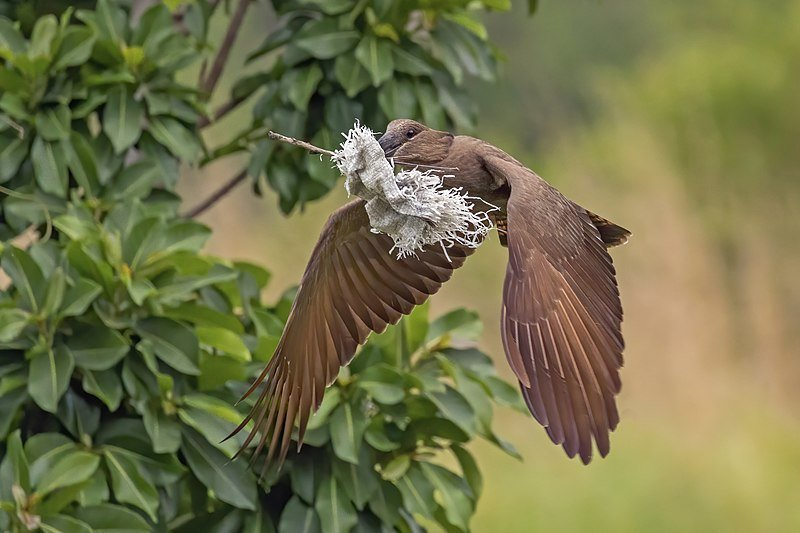
The construction principle of storks is approximately the same as that of all other birds: they simply very skillfully weave stick branches together. But the scope! It takes birds a little more than a month to finish their home. At the same time, hammerheads fly out for building materials up to 60 times per day! This is definitely someone worth hiring! 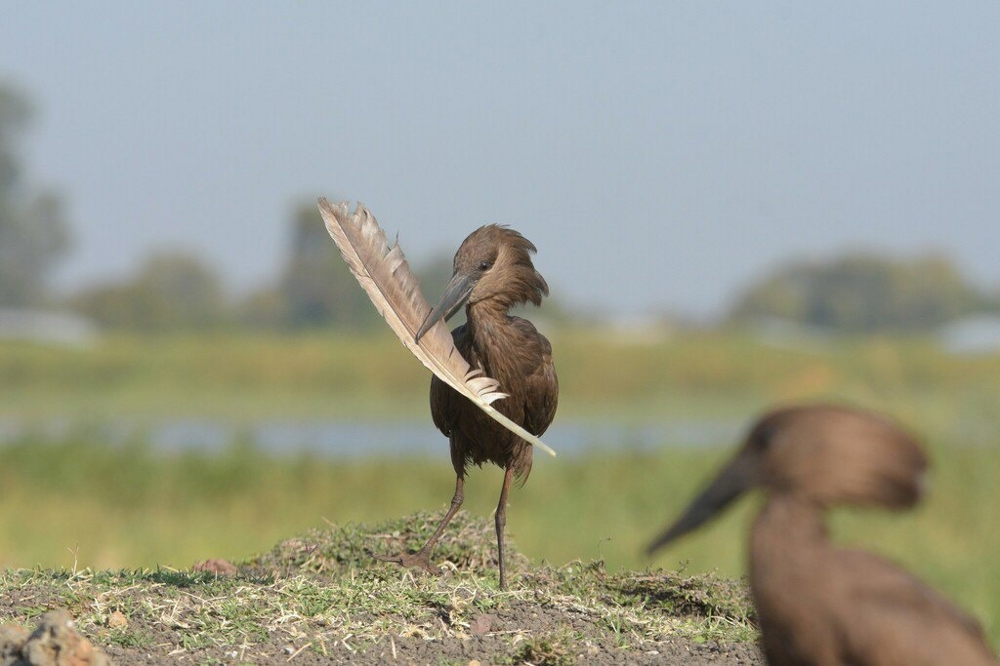
The shape of the finished tree house resembles a huge dugout ball, which can easily accommodate a pair of adult birds and all their chicks. From the outside, the nest reaches two meters in height and one and a half meters in width. Two and a half, Karl! These are the dimensions of a small bathroom! In case you forgot, the size of the bird itself is only 50 centimeters! Inside such a nest there is a chamber that reaches almost a meter in width, and its walls are neatly plastered with clay. They really got confused, they got so confused. One nest of hammerheads reaches 20-50 kilograms of weight, and can withstand even more. A person can climb onto the roof, and nothing will happen to the bird’s house! 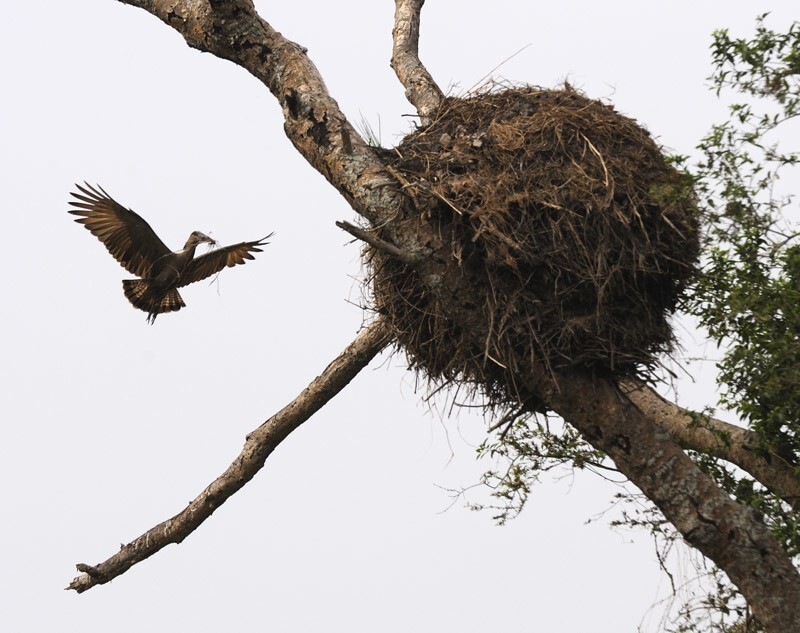
Hammerheads love to decorate their houses with all sorts of cute little things, like tires or bones. But the taste and color, as they say.
Scientists have not yet really understood why such energy expenditures occur. Building at least one such mansion is already a problem, but the hammerheads are concocting 5 at once. And it would be nice if they lived in each one, but no! There are several versions - they say that birds use nests to mark territory, that they have a kind of observation post or watchtower. Others are inclined to the banal fastidiousness of birds. Still others believe that with the help of protracted construction, birds establish relationships in pairs. 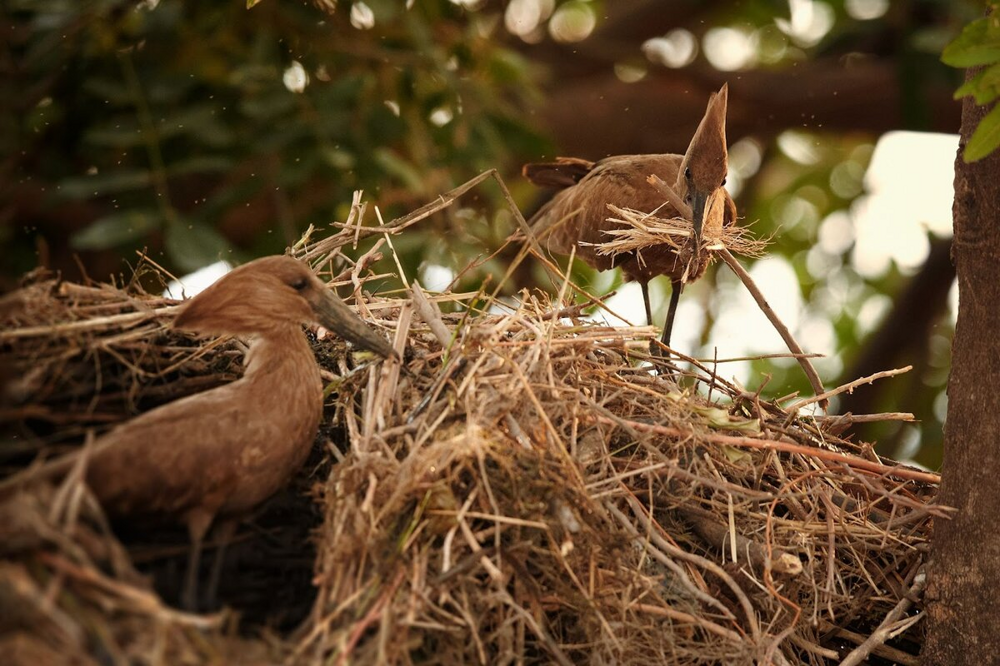
Well, it seems to me that the bird-animals simply pay the hammerheads for their work. Because in the nests of our heroes you can more often meet anyone, but not the master builders themselves. Mansions in the trees are favored by all living creatures: from bees and snakes to Egyptian geese. Well, sometimes new residents don’t even stand on ceremony, but simply set up their conditional nest right on the roof of an existing stork house. 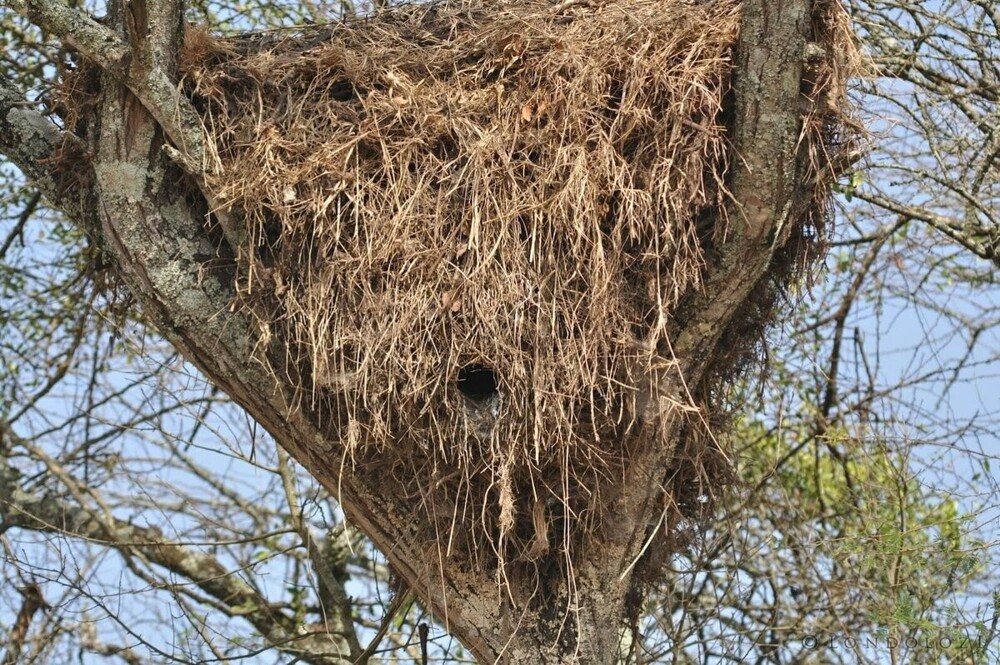
The hammerheads themselves use the nests for their intended purpose for about 3-4 months. Depending on the region, marriageThis period in birds can be extended throughout the year or confined to the rainy seasons. To attract passion, males sing, dance, run in circles and flap their wings. Sometimes during mating games, false mating may occur, but 18+ birds postpone real games until they build a nest. 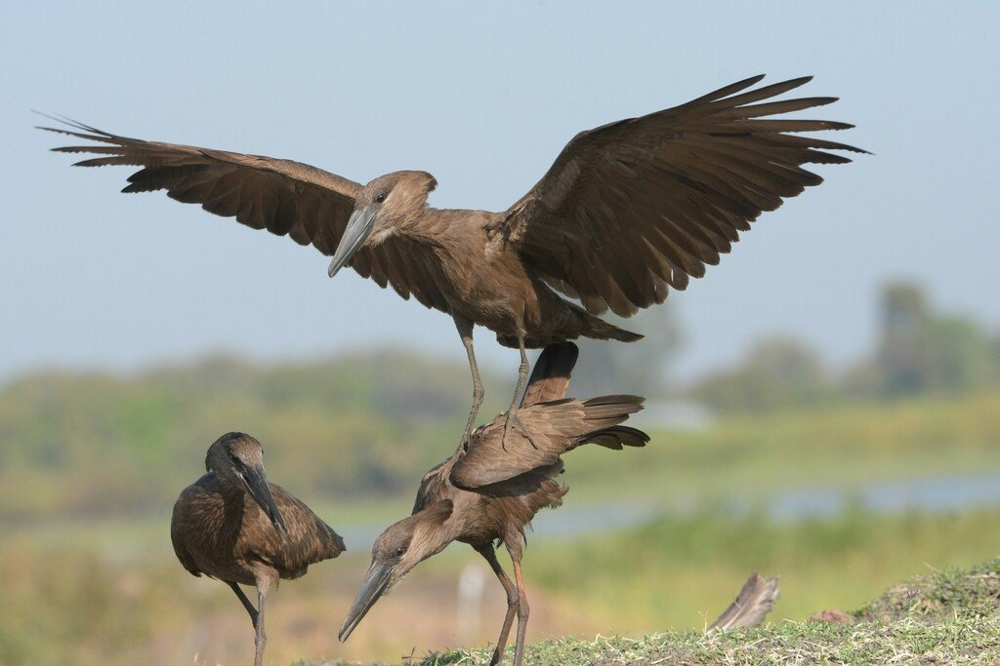
The female lays 3-7 eggs and incubates them for about a month. The chicks hatch covered in gray fluff and completely helpless. However, adults are not afraid to leave them alone. Of course, in such and such a house! Therefore, the birds go in search of food without fear. Hamerkop's favorite prey is small fish, amphibians, shrimp, insects and small rodents. For about two months, the chicks will depend on their parents. Their further fate is unenviable: 40% of all babies die from the fangs of snakes and monitor lizards. Well, those who are lucky will live 20 years - a respectable age for such birds! 
Today they are not threatened, and the birds are not listed in the Red Book. Birds are quite calm about cohabitation with humans and willingly settle near villages. Local residents do not risk hunting hammerheads or harming them in any way, since in traditional beliefs the birds are believed to have superpowers. I don’t know about magic, but in order to build like this, abilities are clearly needed!
And a couple more photos of their gorgeous nests: 
Urbanization the African way 
A safe overnight stay for lonely travelers on the savannah.

